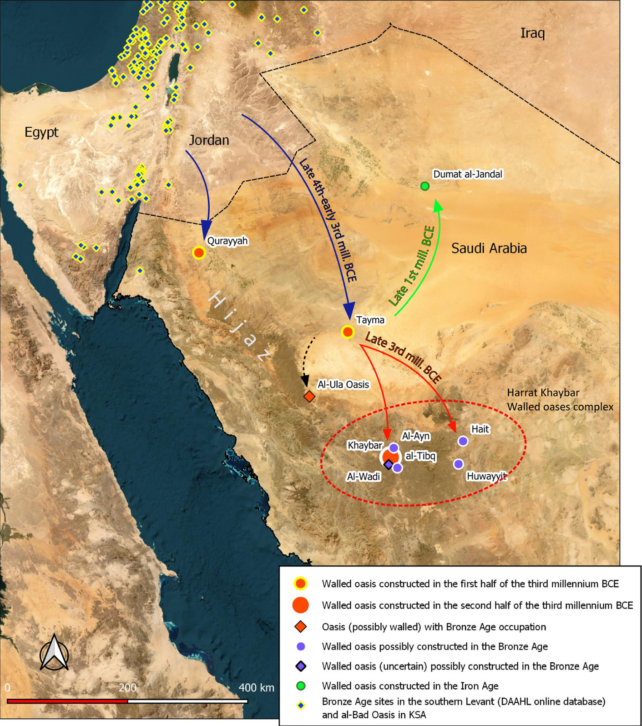The invention of a 4,000-year-old fortified city hidden in an oasis in modern-day Saudi Arabia reveals how life on the time was slowly altering from a nomadic to an city existence, archaeologists stated on Wednesday.
The stays of the city, dubbed al-Natah, have been lengthy hid by the walled oasis of Khaybar, a inexperienced and fertile speck surrounded by desert within the northwest of the Arabian Peninsula.
Then an historic 14.5 kilometer-long wall was found on the website, based on analysis led by French archaeologist Guillaume Charloux revealed earlier this yr.
For a brand new research revealed within the journal PLOS One, a French-Saudi crew of researchers have supplied “proof that these ramparts are organized round a habitat”, Charloux instructed AFP.
The big city, which was house to as much as 500 residents, was constructed round 2,400 BC in the course of the early Bronze Age, the researchers stated.
It was deserted round a thousand years later. “Nobody is aware of why,” Charloux stated.
When al-Natah was constructed, cities have been flourishing within the Levant area alongside the Mediterranean Sea from present-day Syria to Jordan.
Northwest Arabia on the time was thought to have been barren desert, crossed by pastoral nomads and dotted with burial websites.
That was till 15 years in the past, when archaeologists found ramparts relationship again to the Bronze Age within the oasis of Tayma, to Khaybar’s north.
This “first important discovery” led scientists to look nearer at these oases, Charloux stated.
Gradual urbanism
Black volcanic rocks referred to as basalt hid the partitions of al-Natah so properly that it “protected the positioning from unlawful excavations”, Charloux stated.
However observing the positioning from above revealed potential paths and the foundations of homes, suggesting the place the archaeologists wanted to dig.
They found foundations “sturdy sufficient to simply assist at the least one- or two-storey” houses, Charloux stated, emphasizing that there was way more work to be completed to grasp the positioning.

However their preliminary findings paint an image of a 2.6-hectare city with round 50 homes perched on a hill, outfitted with a wall of its personal.
Tombs inside a necropolis there contained steel weapons like axes and daggers in addition to stones comparable to agate, indicating a comparatively superior society for thus way back.
Items of pottery “recommend a comparatively egalitarian society”, the research stated. They’re “very fairly however quite simple ceramics”, added Charloux.
The dimensions of the ramparts – which may attain round 5 meters (16 ft) excessive – means that al-Natah was the seat of some form of highly effective native authority.
These discoveries reveal a strategy of “sluggish urbanism” in the course of the transition between nomadic and extra settled village life, the research stated.
For instance, fortified oases may have been in touch with one another in an space nonetheless largely populated by pastoral nomadic teams. Such exchanges may have even laid the foundations for the “incense route” which noticed spices, frankincense and myrrh traded from southern Arabia to the Mediterranean.
Al-Natah was nonetheless small in comparison with cities in Mesopotamia or Egypt in the course of the interval.
However in these huge expanses of desert, it seems there was “one other path in direction of urbanization” than such city-states, one “extra modest, a lot slower, and fairly particular to the northwest of Arabia”, Charloux stated.
© Agence France-Presse





